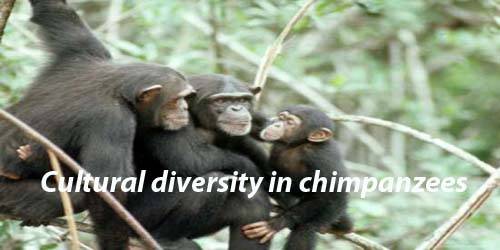Transmission of culture from generation to generation is found only in a few species besides humans. The chimpanzee is such a species and it exhibits a wide variety of cultural and equipment use behaviors. Chimpanzees and humans have a wonderful resemblance. For starters, chimpanzees and humans share almost identical genetic DNA. Recently, another similarity has been found: the presence of culture in chimpanzees. To better understand this diversity, researchers at the Max Planck Institute for Evolutionary Anthropology in Leipzig, Germany, launched the Pan-African Program: The Cultured Chimpanzee (PANF) in 2010. Environmental data have been recorded on more than a dozen temporary and long-term research sites.
Cultural diversity in chimpanzees
Many researchers have argued that chimpanzees have a “culture” of chimpanzees in this national inheritance formula, reports Rowan Hooper of New Scientist. In a study published in Nature Human Behavior, a team of researchers is hopeful that analyzing their snack habits will provide more evidence for chimp culture and, importantly, cultural diversity. However, scientists have discovered evidence of the culture of different species of animals. The strongest and most diverse evidence of culture among animals has been found in chimpanzees.
What was found was that 38 different technical elements created different drunken fishing techniques, all of which were combined in different ways by each community of chimpanzees. Also, people from the same community shared a unique combination of long-term fishing technology components and technological components compared to chimpanzees from other communities. “The variety of techniques seen in chimpanzee tight fishing was a surprise to me. “Each community has a unique way of fishing, they also combine different elements in a particular type of fishing etiquette,” Boyce said in a statement.
One group found a significant relationship between the number of female chimpanzees and the number of cultural features that suggested that female chimpanzees play an important role in transmitting and maintaining cultural diversity. The fact that baby chimpanzees spend close to their mothers for about eight years implies that much of the behavior they teach is the result of maternal influence. Among humans, cultural diversity has been documented in hundreds of different populations which is an explanation for what seems to be so limited compared to chimpanzee culture. “What we already know about chimpanzees comes from about 15 communities,” commented co-author Zalmer Kuhel. “Through Panaf we have been able to study many more communities and by doing so we have been able to learn more about the diversity and culture of chimpanzees and prove that there is much more to discover.” Further research and long-term studies on chimpanzees are important to identify new cultural features and how these cultures evolve over time. Continuous research can create new discoveries that not only change how we think about culture but how it has been used to define us as advanced animals in the animal kingdom.
















